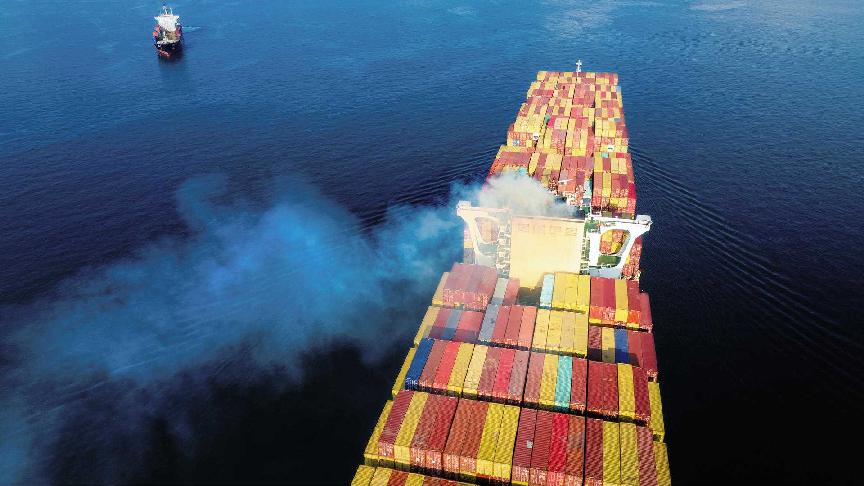6 December 2023 (Lloyd's List) - JIANGNAN Shipyard has unveiled a nuclear-powered 24,000 teu containership design during Marintec China in Shanghai, though prospects for such application on shipping’s decarbonisation journey remain divided.
The shipbuilder under state-owned China State Shipbuilding Corp said the “KUN-24AP” type employs advanced fourth-generation molten salt reactor solutions.
MSRs in principle eliminate the meltdown scenario of water-cooled reactors because the fuel mixture is kept in a molten state.
Jiangnan noted the design will “truly achieve ‘zero emissions’ during the ship’s operation cycle¨ without concerns regarding green fuel price fluctuations or bunkering.
The design has won a statement of compliance from DNV.
The class society in its latest Maritime Forecast to 2050 report said nuclear “could help bridge the gap between short-term measures and the bigger effort needed post-2030 to meet 2040 and 2050 targets in new IMO and forthcoming EU emissions regulations”.
It said nuclear propulsion is less exposed to price volatility and supply issues than other carbon-neutral fuels, while obstacles include global regulations, public perception and technology costs.
During a Marintec seminar today, maritime economist Martin Stopford described the solution as “very promising” at least for some segments.
“It looks like we’ll have a prototype of molten salt reactor in 2031-2032 with a size ranging from 15-70 MW. It’s a very viable possibility but for big ships.”
However, his fellow speaker, Hudong-Zhonghua Shipbuilding general manager Chen Jun, cautioned that nuclear-powered ships could bring additional difficulties in repair and scrapping.
The MSR technology dates back into the 1960s when the US initiated it as part of the wartime Manhattan Project but was fruitless in the following decades.
Japan, Russia, China, France and the US have showed renewed interest in the MSR concept and China is leading the global research, the World Nuclear Association said.
China gave green light to its first thorium-based MSR in June as the reserve of this radioactive metal is abundant in the country and is less expensive than uranium, which is used in naval nuclear propulsion.
However, thorium is expensive to extract and because of a lack of significant experience, the research, development and testing of thorium-powered nuclear installations are also not cheap, the International Atomic Energy Agency said in an analysis released in March.
South Korea research institutes and shipping companies, led by HMM and Sinokor, signed an Memorandum of Understanding in February to develop small modular nuclear reactors to propel ships. This also included using MSR in production of hydrogen.







